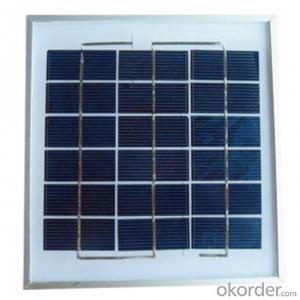Small Size Solar Panel 12W Poly Solar Panel
- Loading Port:
- Shanghai
- Payment Terms:
- TT OR LC
- Min Order Qty:
- 120 watt
- Supply Capability:
- 2000000 watt/month
OKorder Service Pledge
OKorder Financial Service
You Might Also Like
Item specifice
Poly Solar Panel Description
Photovoltaic modules (also called solar panels) are the core part of solar power systems, as well as the most important part of the solar system. Its role is to convert solar energy into electric energy, and sent to stored in batteries, or promote work load.
However, with the use of micro inverter, can be directly convert the current source of pv modules become approximately 40 v voltage source, can drive electrical application in our life.
Main Features of Poly Solar Panel
The production process
Step 1 monolithic welding: the battery slice welding interconnection (tin-plate copper belt), to prepare for the series of cell.
Step 2 series welding: the battery in series according to a certain number.
Step 3 laminated: would continue battery series circuit connection, at the same time with glass, EVA film, TPT back to guard the cell.
Step 4 laminated: the battery slice and glass, EVA film, TPT back at a certain temperature, pressure and vacuum conditions binding together.
Step 5 frame: glass with aluminum frame protection, and ease of installation.
Step 6: cleaning to ensure component appearance.The insulation of the
Step 7 performance test: test the component performance and power
Final step packaging warehousing.
Poly Solar Panel Images
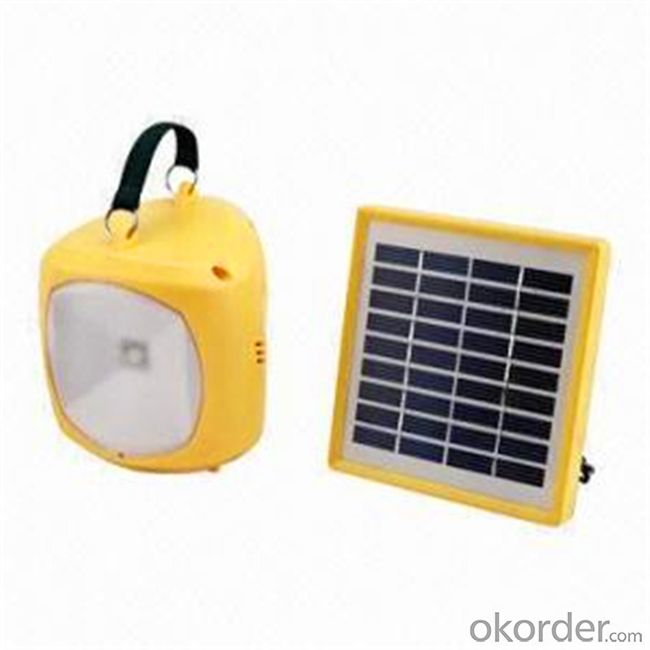
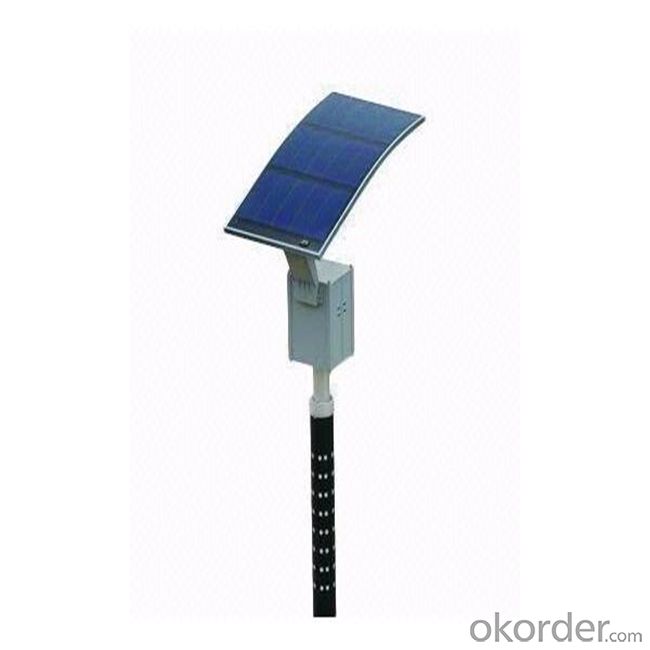
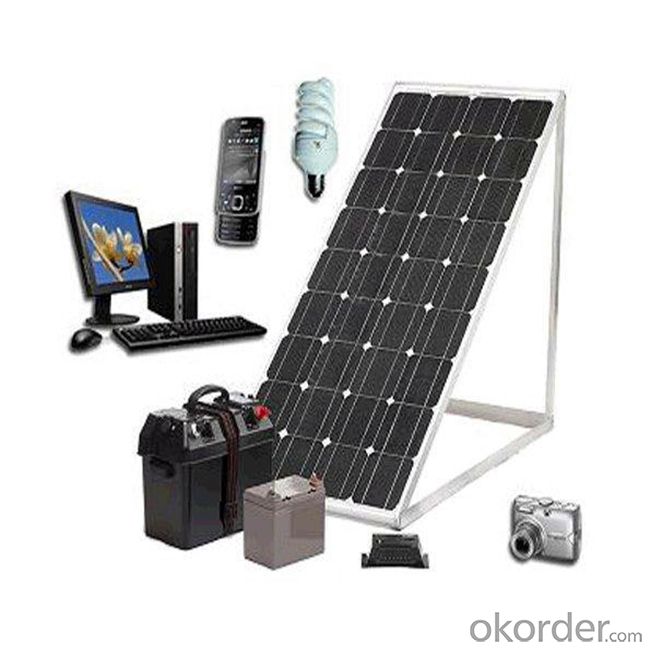
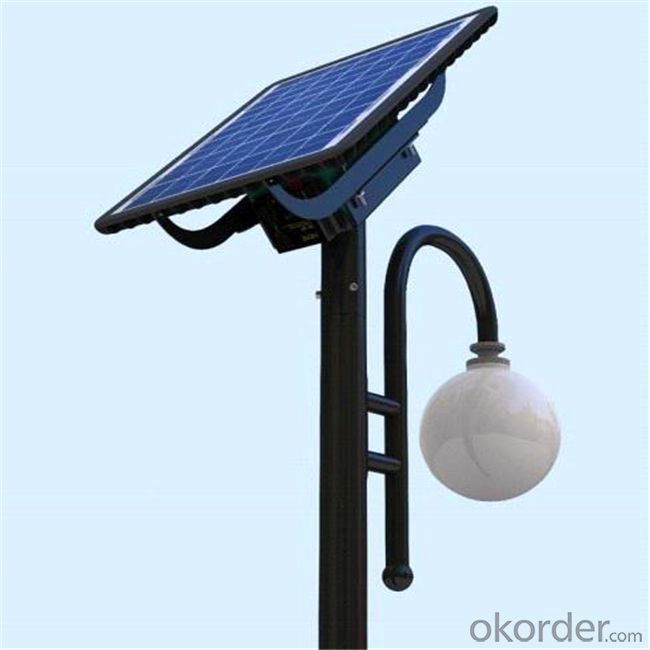
Poly Solar Panel Specification
Place of Origin: | China (Mainland) | Brand Name: | CNBMSolar | Model Number: | BSM20P-36 |
Material: | Polycrystalline Silicon | Size: | 505mm*353mm*28mm | Number of Cells: | 36cells |
Max. Power: | 20w | Front cover: | 3.2mm High Transmission,Low Iron | Frame: | Anodized aluminium alloy |
Frame Color: | Color Silverr,Black | Junction BOX: | lP65 Ralated/Past the TUV certificate | Connector: | MC4 compatible connector |
OEM Order: | acceptable | Certificate: | ISO9001/14001,CE/TUV/UL | Characteristic: | best seller ISO certificate cheaper solar panel with micro inverter |
High wind loading:: | 5400pa | Cable:: | 900mm PV Cable |
FAQ of Poly Solar Panel
Q:About installation cautions?
1 install solar photovoltaic power generation systems requires special skills and knowledge, must be finished by professional engineers.
Q:Requirements of installation personnel?
2 installation personnel to installation, operation and maintenance of photovoltaic components, make sure you fully understand the information in this installation manual, understand the risk of harm could occur during the installation.
Q:What are protective measures?
3 photovoltaic modules under sufficient sunlight or other light source illuminate the production of electricity. When should operate, please take the corresponding protective measures, to avoid people part with 30 v DC or direct contact with the higher voltage.
Q:How does it work?
4 solar photovoltaic modules can converts light energy into direct current (dc), the size of the battery will change as the change of light intensity.5 when components are current or with an external power supply, shall not be connected or disconnected components.
- Q:Can solar panels be installed on a museum or cultural institution?
- Yes, solar panels can be installed on a museum or cultural institution. Many museums and cultural institutions have embraced solar energy as a sustainable and environmentally-friendly solution for their energy needs. Installing solar panels not only helps reduce their carbon footprint but also saves on electricity costs in the long run.
- Q:I had someone quote me for solar panels on my house but I can't afford it. They were talking about how I have enough room and the perfect location to put many of them and actually get paid for it. I have about a half acre that is tiered and points in the correct direction for them to get pretty much the full day sun. Additionally, I live in so cal where it is sunny most of the year. Does anyone know if solar companies will lease or install them to get the payback? I would be happy to allow them to use the land just to cover my electrical expense and they could have any payback.
- Hi, In the UK solar companies will fit them for nothing. The company gets the government allowance (called feed in tarrif FIT) and you get the benefit of the reduction in your power bills. The solar company make better money than the householder,BUT if the householder is in most of the day it could be most beneficial if the energy is used while the panels are generating, this means the householder is not paying for the power from the grid. If the householder works normally from 9 to 5 then there is less advantage in terms of getting free power from the panels. Best Wishes.
- Q:Lower solar panel/wind turbine prices allow wider applications, hence a great help to a greener mother earth!
- “the living feed the dead” -- may have actually lucked into the answer. The government does assist the petroleum industry and it funded the research that gave us nuclear power. If alternative energy is going to work, it may require intervention by the government in terms of access to land (imminent domain) and to the transmission grid. Alternative energy companies are stuck because of their own paranoia (of industrial espionage) and because they are being gouged by land owners. A single wind turbine on your land can net you $70,000 a year (plus a 0% increase per year for inflation), forever. Then there is the cost of the corridor to access the grid. Solar companies are trying to purchase land like drunken sailors – and landowners in areas where solar can be most effective (e.g., the American Southwest) are hip to what is going own. So when acquisition agents call to purchase land, owners are demanding outrageous prices (say $5,000/acre for land that is worth about $00/acre, otherwise). Then there is the fact that nobody (rich or poor) wants one in their backyard, not to mention the various PAVE (People Against Virtually Everything) groups who protest stuff just because they can. ===== A Modest Proposal -- <<0% inflation rate is an extremely high You are, of course, right. Nevertheless, that is what some Wind Energy companies are offering land owners as part of the lease agreement for placing turbines on their land. I agree it's outrageous, but I'm an environmental consultant for several Wind companies and I know what they are offering. As a side note. They were initally so lame (and this is related to their general paranoia) that they cut deals to place the turbines before they secured corridor access to substations. When they subsequently approached the land owners (the same ones with the turbines on their land) about the corridor, they were held hostage for outrageous money - as in millions of dollars - because by then the land owners had them over a barrel.
- Q:I've built a set of lights, fan and a clock running on only solar power. The problem is, i have to present it tomorrow and when the light isn't particularly strong it won't work too well. It works flawlessly when its under my desk light on max brightness but the only the light works when i set it to low brightness. Currently, tomorrow in my city it won't be sunny so any advice for trying to make it work under low light?
- Solar panels are designed to be used to recharge a battery or series of batteries, not for direct power. That is the inherent weakness of solar systems. The only way to have it work in low light conditions if to have several cells wired in series and have a voltage regulator to limit the amount of voltage that can be supplied. Other than that, add a battery and a charging circuit that the cell would supply power to.
- Q:Can solar panels be installed on the ground?
- Yes, solar panels can be installed on the ground. Ground-mounted solar panels are a popular option for residential, commercial, and utility-scale solar installations. They are typically mounted on racks or frames that are secured to the ground, allowing the panels to capture sunlight and convert it into electricity. Ground-mounted solar panels are often preferred when there is limited roof space or for installations that require optimal positioning and easy maintenance.
- Q:How can I know the right type of solar panel to choose for my small village house in Africa?
- The power output of a solar panel uses a formula to determine kilowatts produced per hour per square meter per day. This calculation is important because, if you plan to install a solar power system for your home, you will want to know how many solar panels will be needed. To calculate solar power requirements correctly, you need to gather the data that is needed for the calculation. First you have to find the average amount of solar radiation available for your area. You can use a solar radiation chart. This can range from a 4 to a 7 depending on the area you live in. Write the number down on a piece of paper and indicate it with the letters RA. Next is determine the amount of electricity that you use daily. Add the kilowatt-hours used per month from your utility bill. Multiply this number by ,000 to get the watt hours in a month. Divide the total by 30 for the amount of electricity you use daily. Write this number down and indicate it with the letters DE. Determine the percentage of your home that you want to power with the solar power system. Write this number down and indicate it with the letter P. Determine the system inefficiency factor for the solar power system. You should be able to find this on the brochure for the system or from the manufacturer's web site. Write this number down and indicate it by the letter I. Determine the power or yield that is required for your home. Use the equation P = I x (DE x P) / RA to find the power requirements in kWh. Divide the number from Step 5 by the peak wattage for a single solar panel to determine the number of panels you will need for your home. Goodluck! :)
- Q:in a solar panel, i know that the electrons are knocked loose and used as energy, what happens to the protons?
- Here okorder /... Within this structure, the electrons are not really lost from the system. An electron just gets enough energy (from light) to be able to leave its atom, and float freely around the structure. Hence you have electrons in motion, which is the definition of electric current. If the lights go out, the electrons just settle back into one of the atoms that is missing an electron.
- Q:Can solar panels be used in apartments or condominiums?
- Yes, solar panels can be used in apartments or condominiums. While it may be more challenging to install solar panels on multi-unit buildings, it is possible to implement shared solar systems or install panels on common areas. This allows residents to benefit from solar energy and reduce their electricity costs, even if they do not have individual rooftops for panel installation.
- Q:What is the typical warranty period for solar panels?
- The typical warranty period for solar panels is around 25 to 30 years.
- Q:i wanted to buy solar panels but this guy told me one will just power one light bulb what i want to know is how much thay cost and is it true tat if more power leaves your house than goes in the power company has to send u a cheek
- Whether you get a check for excess power generation depends on where you live. Some places in Texas will do that, the largest 3 utilities in California will not. The bottom line is that you should not expect solar panels to be a moneymaker. They may or may not be a money saver in the long run, depending on your situation. Solar hot water can pay back in a few years, if it displaces an electric water heater, and if it's in a location that is generally warm. Solar electric usually takes longer to pay back, if ever. The best payback is for those who have expensive electricity already, and are also in a sunny area. As an example, our system cost $2k net, and saves us about $600 / year in electricity (i.e., all our usage). It will take 20 years to pay back the installation cost, but I admit we did it for more reasons than the financial.
1. Manufacturer Overview |
|
|---|---|
| Location | |
| Year Established | |
| Annual Output Value | |
| Main Markets | |
| Company Certifications | |
2. Manufacturer Certificates |
|
|---|---|
| a) Certification Name | |
| Range | |
| Reference | |
| Validity Period | |
3. Manufacturer Capability |
|
|---|---|
| a)Trade Capacity | |
| Nearest Port | |
| Export Percentage | |
| No.of Employees in Trade Department | |
| Language Spoken: | |
| b)Factory Information | |
| Factory Size: | |
| No. of Production Lines | |
| Contract Manufacturing | |
| Product Price Range | |
Send your message to us
Small Size Solar Panel 12W Poly Solar Panel
- Loading Port:
- Shanghai
- Payment Terms:
- TT OR LC
- Min Order Qty:
- 120 watt
- Supply Capability:
- 2000000 watt/month
OKorder Service Pledge
OKorder Financial Service
Similar products
New products
Hot products
Hot Searches
Related keywords
